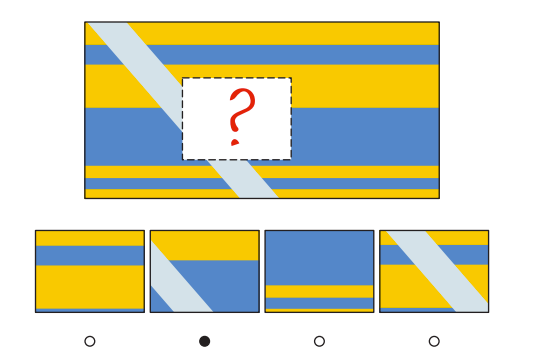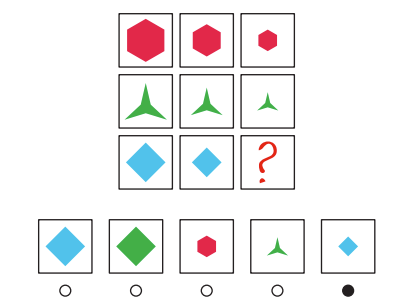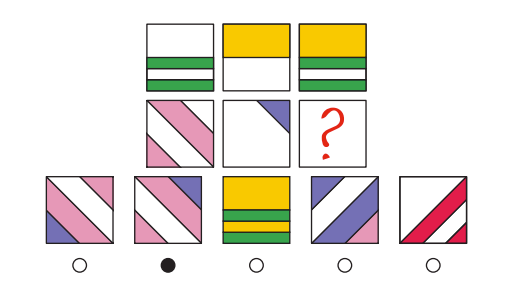NNAT® (Naglieri Nonverbal Abilities Test®)
About NNAT
Naglieri Nonverbal Abilities Test (“NNAT”), published by Pearson NNC, is a multiple-choice non-verbal test commonly used in the U.S. to identify gifted children. Schools often use the NNAT as a tool for admission into schools and programs for gifted and talented children or to measure scholastic achievement across all ages. NNAT evaluates problem solving abilities; the test focuses on shapes and figures and uses minimal written and verbal instructions.
Why NNAT Mind Inventions Books?
All parents want the best for their children. Our mission is simple, we want learning to be fun, enjoyable, and stress free. We are proud to have our books recommended by teachers, approved by parents and loved by kids!
Our workbooks feature practice questions to cover all sections of NNAT. In addition, we include stickers and fun activities to balance out the workload and make this a fun experience for the children. Most importantly all our workbooks are WIPE-CLEAN which means kids can re-do questions many times, allowing them to get better over time and save parents money from buying new books.
It is no surprise our books have been ranked as best workbooks for kindergarten, best workbook for pre-k and best workbook for kids overall! It has been praised by parents, teachers and loved by kids. The activity books are fun, engaging and have 5-star rating on Amazon. But don’t take our word for it, just look at some of the feedback we have received from thousands of happy customers.
NNAT Overview and Facts
The nonverbal method of testing provides fair evaluation of children’s overall ability, independent of their educational or cultural background and language as the test uses minimal verbal instructions.
There are various NNAT levels depending on students’ grade placement. The NNAT test is presented at seven levels: NNAT Level A kindergarten, NNAT Level B for first graders, NNAT Level C for second graders, NNAT Level D for third and fourth graders, NNAT Level E for fifth and sixth graders, NNAT Level F for seventh through eighth graders, and NNAT Level G for students in tenth through twelfth grades. Below table breaks down each level according to the grade and topics covered, note not all NNAT levels include all four types of questions.
| Grade | Level | Serial Reasoning | Reasoning by Analogy | Patten Completion | Spatial Visualization |
| Kindergarten | NNAT Level A | X | X | ||
| 1st Grade | NNAT Level B | X | X | X | |
| 2nd Grade | NNAT Level C | X | X | X | X |
| 3rd– 4th Grade | NNAT Level D | X | X | X | X |
| 5th – 6th Grade | NNAT Level E | X | X | X | X |
| 7th – 9th Grade | NNAT Level F | X | X | X | |
| 10th – 12th Grade | NNAT Level G | X | X | X |
What Does NNAT Test Covers?
The latest NNAT edition (NNAT3) includes 48 questions. The test is administered either online or on paper and takes 30 minutes to complete. NNAT covers four question types:
| Pattern Completion | In Pattern Completion questions, students need to figure out which part of the picture design is missing. |
| Reasoning by Analogy | In Reasoning by Analogy questions, students need to recognize relationships between various geometric shapes. |
| Serial Reasoning | In Reasoning by Analogy questions, students need to recognize a sequence of shapes. |
| Spatial Visualization | In Spatial Visualization questions, students need to combine two or more objects and determine how the resulting figure will look like. |
Tips for NNAT Test
Any test preparation starts with putting in time and effort. It is critical your child is familiar with the test and the process itself. It is important for children to practice as many NNAT test questions as possible until they are comfortable with all sections and grasp the concepts of what is being asked. The best part about using Mind Inventions WIPE-CLEAN workbooks is that it allows children to redo the questions until they get it right. While the actual test is given in blue, yellow and white, Mind Inventions workbooks are filled with fun and colorful questions.
Practice Study Habits
Before starting on any section, find a quiet place with no distractions. Make sure your child is sitting comfortably. Provide positive and encouraging feedback for correct answers and supportive feedback with explanations for incorrect answers. Avoid any negative feedback, comments, or gestures as this may discourage your child. Take breaks when necessary and make sure your child has a full tummy and a good night’s sleep.
Timed Practice
Make sure your child understands the concepts and the thought process how to solve the questions. Ensure they do not spend too much time on a single question and if they get stuck encourage them to use process of elimination and move on. Practice by timing your child so they get a sense of the time it takes and make sure they don’t get stuck on one question for too long.
Process of Elimination
Many NNAT answers can be easily narrowed down. Make sure your child looks at all the answer choices one by one very carefully. Sometimes it is useful to scan the answer choices left to right and then right to left. Be cautious as sometimes the most obvious answer choice may look to be correct but ends up being a trick answer so ensure your child does not rush.
Practice Question Formats
NNAT tests comes with many different sections of various difficulties. It is important that your child understands what to expect on the test date. Make sure to put time and effort into practice questions, especially ensure that your child understands the concepts and the thought process how to solve the questions. Pay close attention how your child evaluates each question and identify areas of strength and weakness. See below for additional tips in tackling various question types.
NNAT Pattern Completion
Pattern and Puzzle completion questions are one of the most fun questions on Gifted and Talented exams. Children are shown a design and are asked to identify a missing piece. These questions require kids to pay attention to shape designs, direction and colors. Many kids already have experience working with puzzles so these type of questions should be very familiar.
Example:

NNAT Pattern Completion Tips and Tricks
- Before starting on any section, find a quiet place with no distractions. Make sure your child is sitting comfortably.
- Provide positive and encouraging feedback for correct answers and supportive feedback with explanations for incorrect answers. Avoid any negative feedback, comments, or gestures as this may discourage your child.
- First, discuss what is in the pattern box with your child. Ask questions such as – what kind of shapes are in the box, what colors, and which direction the shapes are facing?
- Encourage your child to visualize and even draw out a possible answer choice by continuing the design.
- Have your child review each answer choice and describe how it relates to the pattern/puzzle.
NNAT Reasoning by Analogy
Analogy questions evaluate a child’s ability to reason through non-verbal scenarios. Gifted and Talented exam contains two types of analogy questions: picture analogies and figural analogies. Analogy questions are presented in a four box matrix and children need to identify relationships between two pictures or figures in the first row and re-apply the same rule in the second row. Analogies are just another type of puzzle and can become a fun activity even after a child takes the exam.
Example:

NNAT Analogy Tips and Tricks
- Before starting on any section, find a quiet place with no distractions. Make sure your child is sitting comfortably.
- Provide positive and encouraging feedback for correct answers and supportive feedback with explanations for incorrect answers. Avoid any negative feedback, comments, or gestures as this may discourage your child.
- First, discuss the relationship in the matrix. Make sure your child pays close attention to direction, colors and changes in the boxes.
- Consider hiding the given answer choices first and discuss possible solutions.
- Ask your child to identify and eliminate wrong answers.
- If your child is having trouble identifying a relationship, consider providing a relatable but simpler example.
- Analogies are all around us. Integrate analogies throughout the day, may it be in the morning during breakfast or in the car. There is no need to have it as a formal question. Kids love puzzles and games, help them understand the concept of analogies and they will pick it up very quickly.
NNAT Serial Reasoning
Serial Reasoning questions require children to find the missing element in a given, 3×3 matrix. These questions require kids to pay attention to horizontal, vertical and diagonal changes. The relationship can be in design, direction and/or colors. These questions can be quite difficult to grasp so it is important to walk children through the thought process gradually.
Some of the more common transformations may include change in position, size, color and/or shape rotation.
Example:

NNAT Serial Reasoning Tips and Tricks
- Before starting on any section, find a quiet place with no distractions. Make sure your child is sitting comfortably.
- Provide positive and encouraging feedback for correct answers and supportive feedback with explanations for incorrect answers. Avoid any negative feedback, comments, or gestures as this may discourage your child.
- First, discuss what is in the first, second, and third row. Ask questions such as – what kind of shapes are in the box, what colors, and which direction the shapes face?
- Ask the child how the objects change as they move box by box.
- How are the objects changing horizontally, vertically and diagonally?
- Is there outer/inner shape, if so, how is it changing?
- Are the colors changing?
- Are the objects rotating or flipping?
- Are the objects moving up/down or left/right?
- Are the objects increasing or decreasing in size?
- Encourage your child to visualize and draw out a possible answer choice.
- Have your child review each answer choice and describe how it relates to the matrix.
NNAT Spatial Visualization
Spatial Visualization questions are one of the difficult questions and require students to visualize how shapes relate to each other and how they can be manipulated. Children are presented with objects that combine, rotate, switch and transform across rows and columns. The objective is to apply the same logic from first row into the missing piece in the second or third rows.
Some of the more common transformations may include shape combinations, change in position, rotations, shape flips, color switches, and/or folding of objects.
Example:

NNAT Spatial Visualization Tips and Tricks
Before starting on any section, find a quiet place with no distractions. Make sure your child is sitting comfortably.
- Provide positive and encouraging feedback for correct answers and supportive feedback with explanations for incorrect answers. Avoid any negative feedback, comments, or gestures as this may discourage your child.
- First, discuss what is in the first row with your child. Ask questions such as – what kind of shapes are in the box, what colors, which direction the shapes face?
- Ask your child how the objects change as they move box by box.
- Do the objects get combined?
- Is there outer/inner shape, if so, how is it changing?
- Are the colors changing?
- Are the objects rotating or flipping?
- Are the objects moving up/down or left/right?
- Are the objects increasing or decreasing in size?
- Encourage your child to visualize and draw out a possible answer choice.
- Have your child review each answer choice and describe how it relates to the question rows.
What Our Customers Say
 |  |  |
| “Best education workbook for kindergarten” | “Best workbooks and activity books for kindergarten” | “Best kindergarten reading books for kids ages 3+” |
 |  |  |
| “Best NNAT Activity Book” | “Best workbooks for kids overall NNAT and OLSAT” | “Best workbooks for 1st grade” |
 |  |  |
| “Best logic games” | “Amazing preschool learning books” | “Best kindergarten workbooks” |
 |  |  |
“Great quality G&T activity books” | “Great wipe clean early learning activity book” | “Must have early learning books” |
 |  |  |
| “Best prep for otis lennon test and naglieri nonverbal ability test” | “Must have early learning books” | “Fun and engaging products for children ages 3+” |
 | ||
| “Fun NNAT workbook” |
